SAP Access Control
Filter By
Browse By
- SAP Analytics and AI
- SAP Application Development and Integration
- All SAP Application Development and Integration
- SAP ABAP
- SAP ABAP Development Tools
- SAP ABAP Test Cockpit
- SAP API Management
- SAP BAPI
- SAP Basis
- SAP BRF
- SAP Business Application Studio
- SAP CMS
- SAP Design Studio
- SAP Development Tools
- SAP DevOps
- SAP EAI
- SAP EDI
- SAP Extension Suite
- SAP Fiori
- SAP Fiori Elements
- SAP Integration Suite
- SAP Low Code Application Development
- SAP Low Code Automation
- SAP Netweaver
- SAP Release Management
- SAP UI5
- SAP Web Application Server
- SAP Web IDE
- SAP Business Process Management
- SAP Center of Excellence
- SAP CIO
- SAP Customer Experience
- SAP Data and Data Management
- All SAP Data and Data Management
- SAP BW
- SAP BW/4HANA
- SAP Crystal Reporting
- SAP Data Archiving
- SAP Data Center
- SAP Data Governance
- SAP Data Integration
- SAP Data Migration
- SAP Data Quality
- SAP Data Services
- SAP Data Strategy
- SAP Data Visualization
- SAP Data Warehouse Cloud
- SAP DMS
- SAP Document Control
- SAP EIM
- SAP ETL
- SAP ETL Tools
- SAP HANA
- SAP HANA Administration
- SAP HANA Deployment Infrastructure
- SAP HANA Studio
- SAP Master Data
- SAP Master Data Governance
- SAP MDM
- SAP Enterprise Architect
- SAP Enterprise Asset Management
- SAP ERP
- SAP Finance
- All SAP Finance
- SAP Accounting
- SAP AR AP
- SAP Asset Accounting
- SAP Billing Systems
- SAP BPC
- SAP BRIM
- SAP Cash Management
- SAP Central Finance
- SAP Controlling
- SAP COPA
- SAP Cost Center Accounting
- SAP e-invoicing
- SAP FICO
- SAP Finance Automation
- SAP Financial Closing Cockpit
- SAP Financial Consolidation
- SAP Financial Planning
- SAP FX Risk
- SAP General Ledger
- SAP Global Tax Management
- SAP Hyperion
- SAP Order to Cash
- SAP Payment Processing
- SAP Profitability Analysis
- SAP Rebate Management
- SAP S/4HANA Finance
- SAP Universal Journal
- SAP Governance Risk and Compliance
- SAP Human Capital Management
- SAP Intelligent Technologies
- SAP Platform and Technology
- All SAP Platform and Technology
- SAP Business Technology Platform
- SAP Cloud Connector
- SAP Cloud Integration Platform
- SAP Cloud Migration
- SAP Cloud Platform
- SAP Cloud Providers
- SAP Cloud Strategy
- SAP Container Platform
- SAP Digital Asset Management
- SAP Digital Integration Hub
- SAP Digital Signature
- SAP HANA Enterprise Cloud
- SAP HEC
- SAP Hyperscalers
- SAP Infrastructure
- SAP Messaging
- SAP Smart Forms
- SAP Quality and Testing
- SAP Security
- SAP Spend Management
- SAP Supply Chain Management
- All SAP Supply Chain Management
- SAP APO
- SAP Asset Management
- SAP Business Network
- SAP Digital Manufacturing Cloud
- SAP Digital Twin
- SAP EWM
- SAP IBP
- SAP Inventory Management
- SAP Label Printing
- SAP Logistics
- SAP Manufacturing
- SAP Manufacturing Automation
- SAP MES
- SAP MII
- SAP MM
- SAP MRO
- SAP MRP
- SAP Order Management
- SAP Plant Maintenance
- SAP PLM
- SAP Production Planning
- SAP S&OP
- SAP SD
- SAP SPM
- SAP Supply Chain Planning
- SAP Track and Trace
- SAP Transportation Management
- SAP System Administration
What is SAP Access Control?
Improper access is a major security threat to SAP and other enterprise systems. The issue only gets worse as employees increasingly access their relevant applications remotely and on varying, often personal, devices. The goal of SAP Access Control is to ensure the right people are using the right software from the right device. It also helps track access information in case it needs to be reported later for compliance purposes or assessed for risk.
SAP Access Control’s key functions include:
- Risk analysis
- User provisioning
- Monitoring privileges
- Certifying authorizations
- Integration with enterprise systems
- Role definition and maintenance
Key SAP Access Control Considerations for SAPinsiders
What is SAP Access Control?
Improper access is a major security threat to SAP and other enterprise systems. The issue only gets worse as employees increasingly access their relevant applications remotely and on varying, often personal, devices. The goal of SAP Access Control is to ensure the right people are using the right software from the right device. It also helps track access information in case it needs to be reported later for compliance purposes or assessed for risk.
SAP Access Control’s key functions include:
- Risk analysis
- User provisioning
- Monitoring privileges
- Certifying authorizations
- Integration with enterprise systems
- Role definition and maintenance
Key SAP Access Control Considerations for SAPinsiders
- Quantify how improving user access and identity management impacts the bottom line. Most governance, risk, and compliance (GRC) organizations surveyed for our recent User Access and Identity Management for SAP S/4HANA report are facing budget constraints. That can make it hard to invest in software like SAP Access Control, but you can build the business case by finding those areas where unauthorized access can be costly. Added costs can come from cyberattacks, fraud, compliance-related fines, and rework to address audit issues. The cybersecurity threats are real — over a quarter of respondents noted having an access-related security breach in our April 2021 Securing the SAP Landscape Against Cyber Threats report.
- Audit your user access landscape. First, gain an understanding of which users are accessing which systems and why. Then, survey your users and identify which roles need which systems. These steps can help you be more efficient in integrating your access across your technology footprint.
- Integrate user access and identity management across your technology stack as part of your migration. Respondents to our latest User Access and Identity Management survey who worked for leading organizations were much more likely to integrate user access and identity management as part of digital transformation and integrate identity management across their heterogeneous application landscapes. These actions can help you optimize investment in software like SAP Access Control and create a holistic user access and identity management strategy.
- Centralize user access and identity processes to maximize your next technology investment. Centralizing user access and identity management can provide benefits that reduce risk, enable compliance, and make securing your systems easier. However, you must first unify the process by which you identify users and grant access to systems, no matter the business area or solution. That will make any technological investment more valuable when implemented.
1217 results
-

- SAP CyberSecurity
 Premium
Premium
Panel: Learn How SAP Access Control Customers Leverage Pathlock to Monitor Cross System Risks
SAP Access Violation Management by Pathlock extends SAP Access Control to business applications to enable SOD reporting across systems and automates SOD mitigation controls to ensure audit readiness. This session provides a customer overview of GRC deployments including the business benefits they’ve achieved with SAP Access Violation Management. In thisView this session deck to: Understand…
-

Don’t Wait Until After Go-Live to Set Up Cross-Company Code Controlling
Published: 15/September/2006
Reading time: 16 mins
A wrong decision during the setup of your organizational structure can lead to a loss of functionality in logistics and controlling. You can avoid a costly reorganization of your database with cross-company code controlling. Hear about the pros and cons and learn the prerequisites for its configuration. Key Concept Organizational structure design is one of...…
-

Reasons to Perform a Controlling Area Reorganization
Published: 27/February/2013
Reading time: 11 mins
Learn about the options to change the controlling area structure in an SAP Financials system post go-live. Key Concept The key element of the CO enterprise structure is the Controlling Area. At the initial stages of any project the analyst defines the organizational relationship between controlling areas (CO) and company codes (FI). The decisions made...…
-
-

Managing the Identity Life Cycle in Hybrid SAP Environments
Published: 21/May/2020
Reading time: 13 mins
This article explains how to build a security bridge between on-premise and cloud-based applications in hybrid SAP landscapes by extending on-premise user authentication and identity management into the cloud.
-

Set Up Intuitive and Automated Reporting Functionality with Crystal Reports
Published: 21/January/2010
Reading time: 17 mins
Discover a strategy for configuring and developing Crystal Reports for your organization’s SAP BusinessObjects GRC solutions, such as SAP BusinessObjects Process Control. Walk through key installation requirements and configuration steps for your SAP BusinessObjects GRC solutions related to the SAP BusinessObjects Enterprise server, and identify key configuration settings that need to be put into place....…
-

SAP Cloud Identity Access Governance (IAG) – A Primer
Published: 27/June/2023
Reading time: 4 mins
SAP Cloud Identity Access Governance (IAG) is a cloud-driven solution designed to facilitate organizations in controlling access to vital business software and data. It forms a component of the SAP Business Technology Platform (BTP), offering a multitude of cloud services and solutions adaptable to businesses of different scales. With SAP Cloud IAG, companies can efficiently…
-

Create a Control Dashboard to Monitor Your Internal Controls
Published: 15/July/2004
Reading time: 14 mins
It is vital to track user exits to ensure the financial transparency of your company. The author introduces a programmable “control dashboard” that will enable you to recognize, document, and help audit the user exits in your company’s system. How many user exits are working in your R/3 environment? What is the objective of a...…
-
-

Turn Emergency Access Management into an Auditable, Centralized Process for Your SAP Landscape
Published: 07/November/2011
Reading time: 13 mins
SAP BusinessObjects Access Control 10.0 centralizes what has traditionally been the disparate process of administering exception-based access. In the past administrators maintained firefighter, owner, and supervisor assignments locally in each system, and business users initiated firefighter sessions in these systems. In version 10.0, however, the process of maintenance and initialization of firefighter sessions is done...…
-

SAP Access Controls: Protect Your Company from Fraud
Published: 12/March/2020
Reading time: 1 mins
Many companies in the world are running SAP and regardless of company size, there are always multiple people in various roles using the system to enter and obtain information. However, that does not mean they all need access to the same information. In fact, it is in the company’s best interest to limit access to…
-

Troubleshoot the Three SAPSprint Root Error Categories for Server-Based Printing on Windows
Published: 29/October/2009
Reading time: 17 mins
A failed printout can delay or disrupt important meetings or cause you to miss deadlines. See how to avoid printer failures when using SAPSprint by analyzing the three most common types of errors. Also find answers to common SAPSprint issues in the SAPSprint FAQs. Key Concept Processing in SAPSprint involves generating print data via the...…
Featured Experts
-

Akash Kumar
Associate General Manager, HCL
Become a Member
Unlimited access to thousands of resources for SAP-specific expertise that can only be found here.
Upcoming Events
Related Vendors
Your request has been successfully sent


